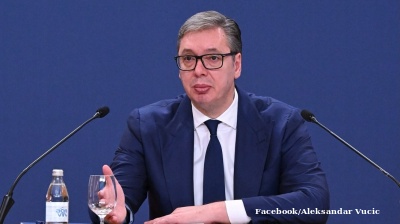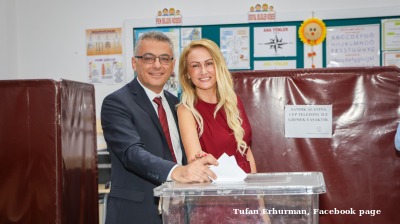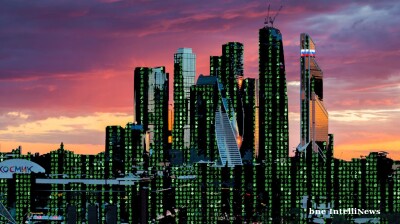Catherine the Great once remarked that, “taxes for the state are like sails for a ship. They serve to guide it to harbour, not to overwhelm it with their burden or keep it forever at sea and ultimately sink it.”
Now the Russian ship of state is again facing rough economic seas. Given a combination of low oil prices, an Opec deal that has failed to raise them as much as hoped, continued sanctions, and a growing realisation that the economy faces a structural growth cap, tax reform is once again on the agenda.
Early 2017 has seen discussion of a post-election ‘tax manoeuvre’, otherwise known as the 20/20 plan, that could have significant consequences for the Russian economy – and tell us much about the priorities of the local economic leadership. Understanding the plan, however, first requires a look at exactly how the Russian government collects its revenue, as well as how the tax system impacts on average Russians.
Death and nalogi (taxes)
Russia’s federal government collects four kinds of tax revenue: corporate taxes, excise taxes, value-added tax (VAT) and mineral taxes, predominantly the mineral extraction tax (MET, or NDPI in Russian). As shown in the chart below, revenues from each category are not split evenly: the MET and VAT made up some 84% of total federal revenue in 2016. Officials often cite a decreasing dependence of the federal budget on hydrocarbon revenues in recent years (down from a figure closer to 50%), and while this is mathematically correct, the driving force behind this trend is lower oil prices, not calculated reform: the government is simply making less money on oil.

The regional revenue structure differs somewhat. Russia’s regions collect their revenue predominantly from corporate taxes and a flat 13% income tax that was introduced in the early 2000s. As can be seen in the chart below, mineral revenue accounts for only a tiny fraction of regional revenue streams.

Returning to the federal level, what is the recent revenue trend? There are a couple of drivers visible in the chart below.

The biggest change from 2015 to 2016 was an increase in excise tax revenues, which was driven by an increase in the tax rates for items such as cigarettes and alcohol. Taxes on other items such as palm oil and sugary drinks were discussed but ultimately not included for now. To note though, excise taxes do not net the state much cash: only RUB632bn in 2016, some $11.3bn. On the opposite side, mineral tax revenues decreased markedly as oil prices plunged. VAT revenues increased, but the tax itself did not change: authorities improved collecting the tax, but the actual rate itself (18%) remained constant.
Evasive manoeuvres
While oil revenues are critical for the Russian economy, the average working Russian likely has little interaction with the mineral extraction tax. For him or her, the most relevant taxes are the VAT, their income tax, and insurance premiums paid by their employer directly into Russia’s non-budgetary funds (essentially a payroll tax that feeds the local social security program). In their simplified form, the current rates for each tax are 13%, 18%, and 30% respectively.

Enter the tax manoeuvre, a plan that would effectively shift burdens within the tax system, increasing the VAT, while reducing the burden on employers. Though the exact parameters of the manoeuvre have not been decided – it remains unclear whether negotiations are even happening right now – the VAT would be raised to somewhere between 20-23%, while insurance premiums would be reduced to a similar range (hence the 20/20). There has been talk, although in much less concrete terms, of increasing the income tax to 15% along with introducing a minimal taxable income level: effectively an implementation of a quasi-progressive tax system.
Kirill Nikitin, partner at consultants PWC and professor of tax policy at Moscow State University (MGU), explains the changes in much more concrete terms, describing how they effect an average Russian worker, Ivan Ivanovich. Right now, Ivan has an income of RUB100, and after taxes (13%) he brings home RUB87. For each paycheck he receives, his employer contributes RUB30 (30% of 100) to Russia’s non-budgetary funds. Assuming he spends all of his income and does not buy alcohol and cigarettes subject to heavier excise taxation (molodyets, Russians would undoubtedly tell him), he pays another RUB13 in value added taxes. Nikitin argues that Ivanovich’s effective tax rate is 43% (vs. an OECD average tax wedge of 36%): the total taxes paid are RUB56 (30 + 13 + 13), out of a potential income of RUB130 (his salary plus the insurance premium). Under the 21/21 arrangement, the overall tax burden would be reduced to 40%.
Accounts differ on the direct implications of the manoeuvre for the economy. Nikitin calculates that a 21/21 configuration would lead to a budget loss of RUB200bn ($3.56bn). The Ministry of Finance sees a 22/22 configuration as profitable, with the budget to gain RUB186bn extra ($3.31bn). Of critical note, however, are the indirect implications of the move: employers would find it cheaper to hire employees. That could both stimulate the economy overall, as well as bring labour out of the shadows. Russia’s government continues to miss out on revenue from a large informal sector, which grew to a record size last year. With less expensive employment costs, budget revenue from on-the-books employees could be significant – up to RUB500bn ($8.9bn), according to the Ministry of Finance.
On the other hand, few calculations seem to have been done on how an increase in prices (what a VAT hike necessarily entails) might mean for consumers’ already sluggish demand, especially if real disposable income continues to contract. And the inflationary consequences of the hike (2.4% in the middle-term, per Nikitin) might not enthrall the erstwhile guardians of Russian monetary policy.
It bears note that talk of these reforms indicates a shift in focus by officials to the mid-term: the direct fiscal gains are small, which suggests that the measure is not about making ends meet, so much as boosting growth in the longer term. None of these adjustments are planned until 2019, after the presidential election scheduled for March of next year. This is for a good reason: tax adjustments are politically dicey. Widespread, if small-sized, protests by truckers over highway fares are already a signal that even increases in indirect taxes may be politically fraught.
This appears not to be lost on the Kremlin, with reports indicating that Putin upbraided in a letter a number of officials for publically discussing tax plans. The present plan may be to wait and hope the economy improves before further discussion, but the fact that there has been any talk of tax increases, let alone with specific terms, is already a departure from the norm and signal of intent by economic planners. Tax discussions may also be a political opportunity for Putin to descend to the mortal political plane and publically rebuke an overzealous finance ministry, earning political credit while securing passage for a less radical manoeuvre.
All that said though, for the government asking Russians to contribute more of their earnings to the budget in the mid-term will not increase their appetite for wasteful spending or willingness to put up with corruption from their officials. The manoeuvre is just a ship-steadying change: notable, but still not the sort of fundamental structural reform so often described as necessary.
Opinion

Armenia’s painful reorientation toward the West
Yerevan’s drive to break free from its dependency on Moscow is generating profound internal political turbulence and exposing it to new external risks, says a report by the Central Asia‑Caucasus Institute & Silk Road Studies Program.

COMMENT: Europe’s “fake it till you make it” war approach cannot hold off Russia’s trillion dollar war machine
In their speeches on the war in Ukraine, European leaders appear like a video clip looped on repeat. Standing before the cameras they declare new packages of support for Kyiv and threaten new measures to pressure Russia as if it was still 2022.

A year after the Novi Sad disaster, Belgrade faces one crisis after another
Serbia’s government is grappling with a convergence of crises which threaten to erode President Aleksandar Vucic’s once-dominant position.

Don’t be fooled, Northern Cyprus’ new president is no opponent of Erdogan, says academic
Turkey’s powers-that-be said to have anticipated that Tufan Erhurman will pose no major threat.



